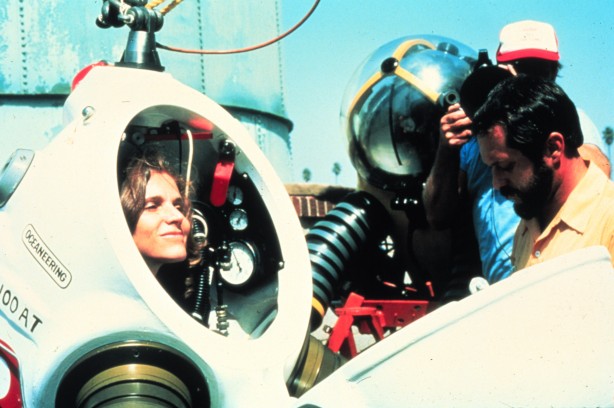the life aquatic
Few people on earth can tell the kind of stories that Sylvia Earle can. We’re huddled around a speaker phone, leaning forward intently as the legendary oceanographer recounts one of the most memorable moments of her long career. The year was 1979, and Earle was about to embark on the deepest undersea walk ever attempted. At a depth of 381 metres beneath the surface, she stepped off the edge of a submersible – and into the abyss.
“It was completely dark,” she recalls, “except for the flash, sparkle and glow of the bioluminescent creatures who make their own kind of firefly light. It was like gliding into another galaxy. I touched some of the corals that sprouted from the ocean floor like giant whiskers; they were spiralled like big springs and when I touched them they burst with rings of blue fire. It was just magical and it gave me an appetite for wanting to go deeper and to explore using whatever it took to get me down there.”
Since then, Earle has gone on to explore deeper and further into the ocean depths – both as a scuba diver and by creating robotic submarines to explore beyond the reaches of humankind. Much of that has been in submarines and diving suits that she and her British-born ex-husband Graham Hawkes designed through their own Steve Zissou-esque outfit, Deep Ocean Engineering.
As a passionate campaigner, Earle’s main job these days is highlighting the plight of the world’s oceans – but she still manages to get out on (and, of course, under) the water once a month or so. Her record-breaking walk on the seabed remains the deepest-ever dive made by a woman, and Earle’s life work hasn't just been pioneering in the exploration sense. In 1970 she led the first all-women team to an underwater habitat called Tektite II, located off the Virgin Islands, to demonstrate the use of cutting-edge technology. Nicknamed the ‘aqua-babes’ by the press, Earle and her fellow female pioneers spent two weeks submerged at 50 feet in an inhospitable yet fascinating place – an experience which not only nurtured her growing passion for venturing into the water for the sake of exploration, but also instilled a deep sense of connection to with the natural environment.
“I think the most important aspect of living underwater was the gift of time, of being able to stay long enough to get insight into the nature of a place,” she says of her days on Tektite II. “Things that you take for granted on the land, whether it’s going into a forest or climbing a mountain, you cannot do down there. But you can sit there for hours, days, weeks – you get to see the changes over time. One great breakthrough for me came in realising that all fish are different, one from another, and not just the fish, but even the little snails that lived in the vicinity of the lab, you could quickly see that there aren’t any two exactly alike, they behave differently, they look different, they occupy different niches in the structure of the reef. It just hadn’t occurred to me that the diversity of life extends to all life."
+ + +
Text by Chris Hatherill and Regina Peldszus. For more, you can read our full feature in the A\W11 issue of AnOther Magazine
